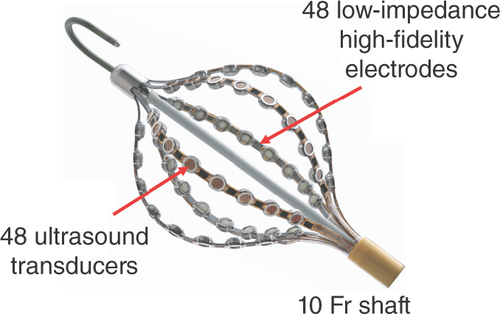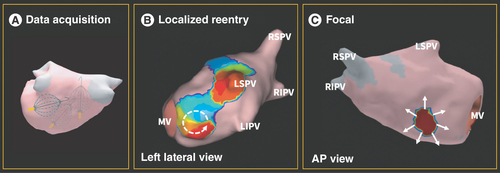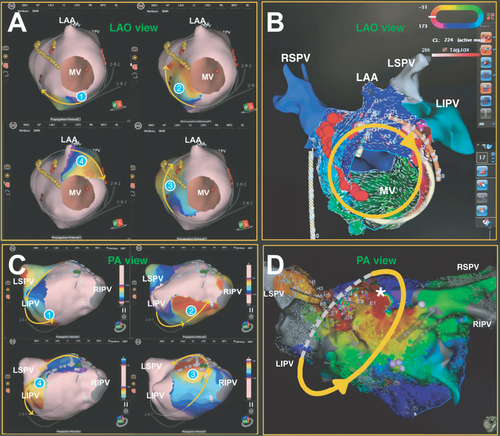Figures & data

(A) Sample positions of the AcQMap catheter in relation to the walls of the left atrium. (B) SuperMap-derived display depicting a localized re-entrant circuit, with broken white arrow denoting directionality of the re-entrant circuit. (C) SuperMap-derived display depicting a focal source of automaticity, with white arrows denoting centrifugal depolarization.
AP: Anterior–posterior; LIPV: Left inferior pulmonary vein; LSPV: Left superior pulmonary vein; MV: Mitral valve; RIPV: Right inferior pulmonary vein; RSPV: Right superior pulmonary vein.

Table 1. Comparison of studies and patient selection.
Table 2. Study demonstration of procedural feasibility and safety.
Table 3. Procedural success and blinded comparison with traditional contact-based mapping.
(A) Numerically ordered panels of SuperMap displaying the activation sequence of an atypical mitral flutter chronologically. (B) Corresponding CARTO vector map. (C) Numerically ordered panels of SuperMap portraying the activation sequence of an atypical roof flutter in the left atrium chronologically. (D) Corresponding CARTO activation map showing early activation meets latest activation in the left atrium (asterisk). Anatomical surfaces in red correspond to early activation, and surfaces in blue indicate late activation. Yellow arrows denote direction of flutter waves.
CL: Cycle length; LAA: Left atrial appendage; LAO: Left anterior oblique; LIPV: Left inferior pulmonary vein; LSPV: Left superior pulmonary vein; MV: Mitral valve; PA: Posterior–anterior; RIPV: Right inferior pulmonary vein; RSPV: Right superior pulmonary vein.

